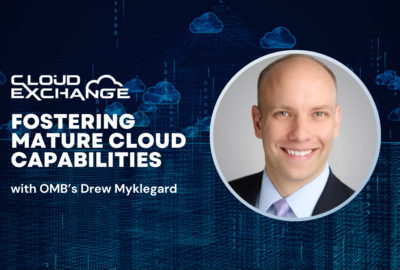Insight by Red Hat
Cloud Exchange 2024: Red Hat’s Adam Clater on evolving infrastructure based on mission need, speed
Red Hat’s chief architect for North America public sector says agencies increasingly rely on cloud service providers to meet their infrastructure needs.
Federal agencies are looking for the flexibility to scale up their infrastructure needs in times of high demand.
Adam Clater, chief architect for North America public sector at Red Hat, said cloud is enabling agencies to deliver a high level of customer service to the public at speed and scale.
“The reality is the consumer of these government services — you and I, and everybody else — has an expectation that they’re going to be much closer to what we use on an everyday basis — whether it be Facebook, or Amazon, or whatever tool you use every day to get things done in your life,” Clater said during Federal News Network’s Cloud Exchange 2024. “You expect your government to respond the same, so the government’s had to play a little bit of catch-up, and they’re doing a good job.”
Agencies are increasingly relying on cloud service providers to meet their infrastructure needs.
“Back in the day it was, ‘I need to order a server. I need to rack and stack it, hook it up.’ … Just to get to that point could take 90 days to six months, just to get a server on the floor. Then you’ve got to get your application infrastructure deployed on it, and then your developers can start being productive,” Clater said. “With things like virtualization and cloud technology, we went from a six- to nine-month lag to six to nine days, or maybe even six to nine hours, of being able to have those developers productive.”
Cloud consumption model aligns to agencies’ seasonal compute demands
Agencies, he added, can marshal resources and surge their capacity much more quickly as their missions demand.
“Agencies gain an immense amount of flexibility. When we think about the demand cycles that agencies may have — the seasonality of interaction from their customers — it can make a lot of sense to not own all of that iron inside of your data center in order to reach that maximum capacity need, when the reality is for nine months out of the year you only need a third of that. The ability to burst and scale dynamically has really been valuable to agencies,” Clater said.
The Office of Management and Budget first pushed agencies to move to the cloud under its Cloud First guidance. But since 2017, OMB has called on agencies to follow its Cloud Smart Strategy.
“Cloud First certainly drove us very, very hard to get in the cloud. And think about the amazing things that agencies have done. They moved their video conferencing, which was crucial for COVID,” Clater said. “They moved their email. They moved their collaboration tools, their document management. A lot of that stuff now just completely lives in the cloud, and you wouldn’t think of doing it any other way.”
The cloud allows agencies to speed up services to their customers, but agency officials need to understand that cloud migration doesn’t necessarily translate into cost savings.
“It’s not always more cost-effective to move to the cloud,” Clater said. “If you’re going to cloud, be smart about how you’re going to do it.”
When it comes to assessing costs, agencies need to consider cloud transit fees.
“If you’re bringing data into the cloud, that’s free, but getting your data back out of your cloud, there may be some costs associated with that. So you need to think pretty carefully about where that data ends up,” Clater said.
Addressing critical cloud data, cybersecurity questions
More broadly, agencies also need to take a closer look at their data needs.
“Data is a tough one because data has gravity. And so, there’s certainly a need for applications to have proximity to that data,” Clater said. “As you start to move more of your data into one particular cloud provider, you may find that more of your applications are going to follow that data with them. And so, you need to have an understanding of how you’re moving your data, where you’re going to put that data and then have some sort of data access mechanism. Usually, we see agencies building application programming interface layers around their data, so they can access that from any cloud as they need to.”
Cloud migration also gives agencies an opportunity to optimize their applications as they move them into the cloud and take advantage of cloud-native technologies.
“It can be difficult, and there’s a lot of refactoring of applications that needs to happen when you do it,” Clater said. “The good news is we’ve seen a lot of advances in technologies like Kubernetes, and things like Istio and service meshes, that are making it much easier to do some of those migrations within your own data center.”
Cloud migration, however, also requires agencies to rethink their cybersecurity strategies to adapt to an evolving threat landscape.
“There is no single product that’s going to zero trust your entire environment. It’s going to start with data analysis, just like going into the cloud,” he said. “So, at some point, you’re going to have to get down there and do that analysis of your data and figure out who needs to have access to it who shouldn’t, and how they should be accessing it.”
While agencies are seeing mission benefits in moving to the cloud, Clater said not all workloads make sense for cloud migration, and that agencies in some cases are moving their data into data centers or internal clouds.
“There are data that I think are always going to be in either a government or outsourced sort of private data center. And then there are some that are always going to live in the cloud.”
Discover more articles and videos now on Federal News Network’s Cloud Exchange event page.
Copyright © 2025 Federal News Network. All rights reserved. This website is not intended for users located within the European Economic Area.
Jory Heckman is a reporter at Federal News Network covering U.S. Postal Service, IRS, big data and technology issues.
Follow @jheckmanWFED






